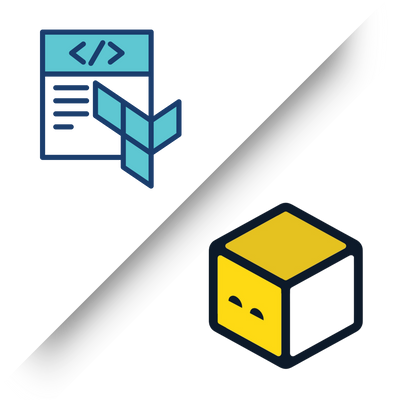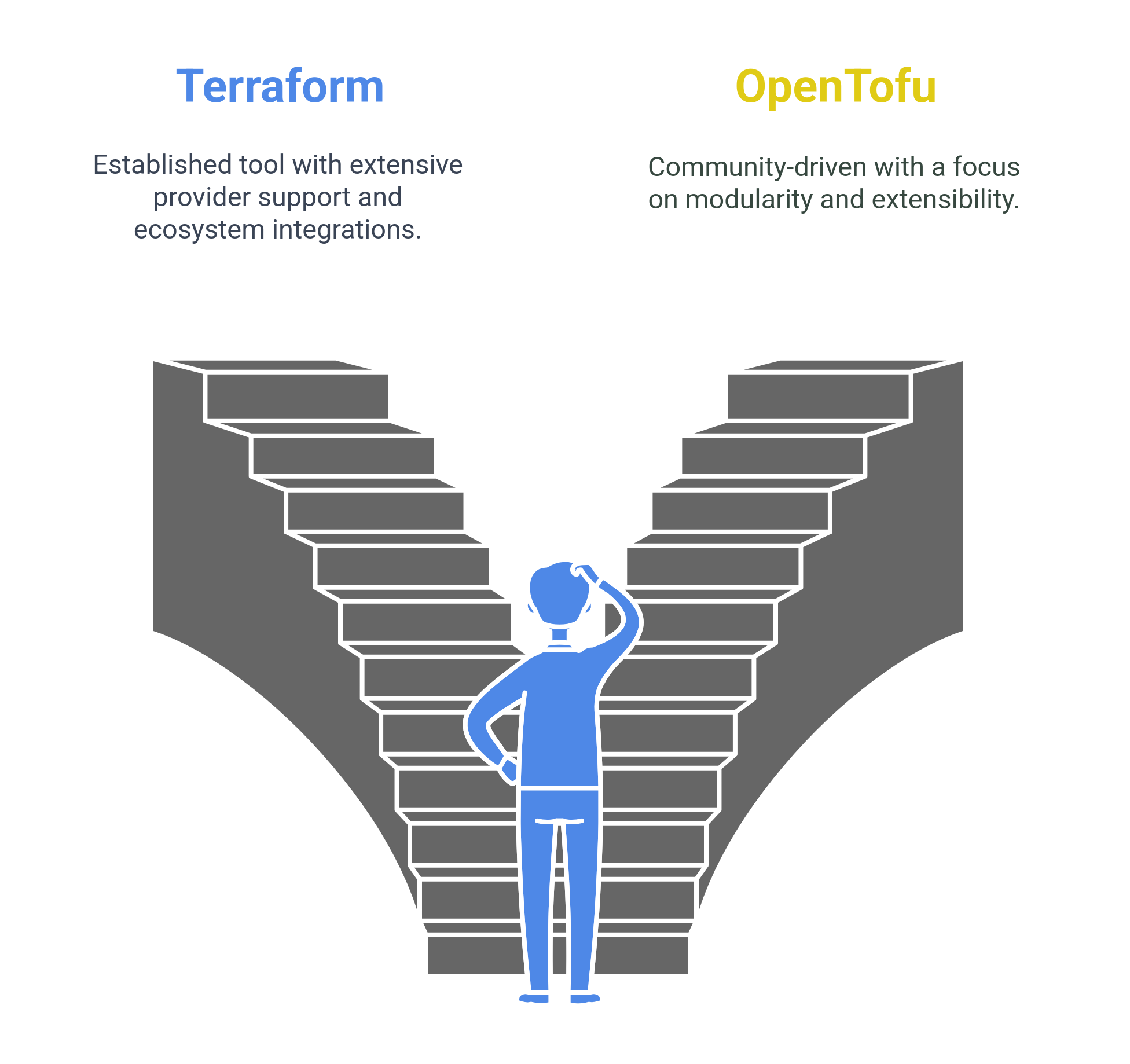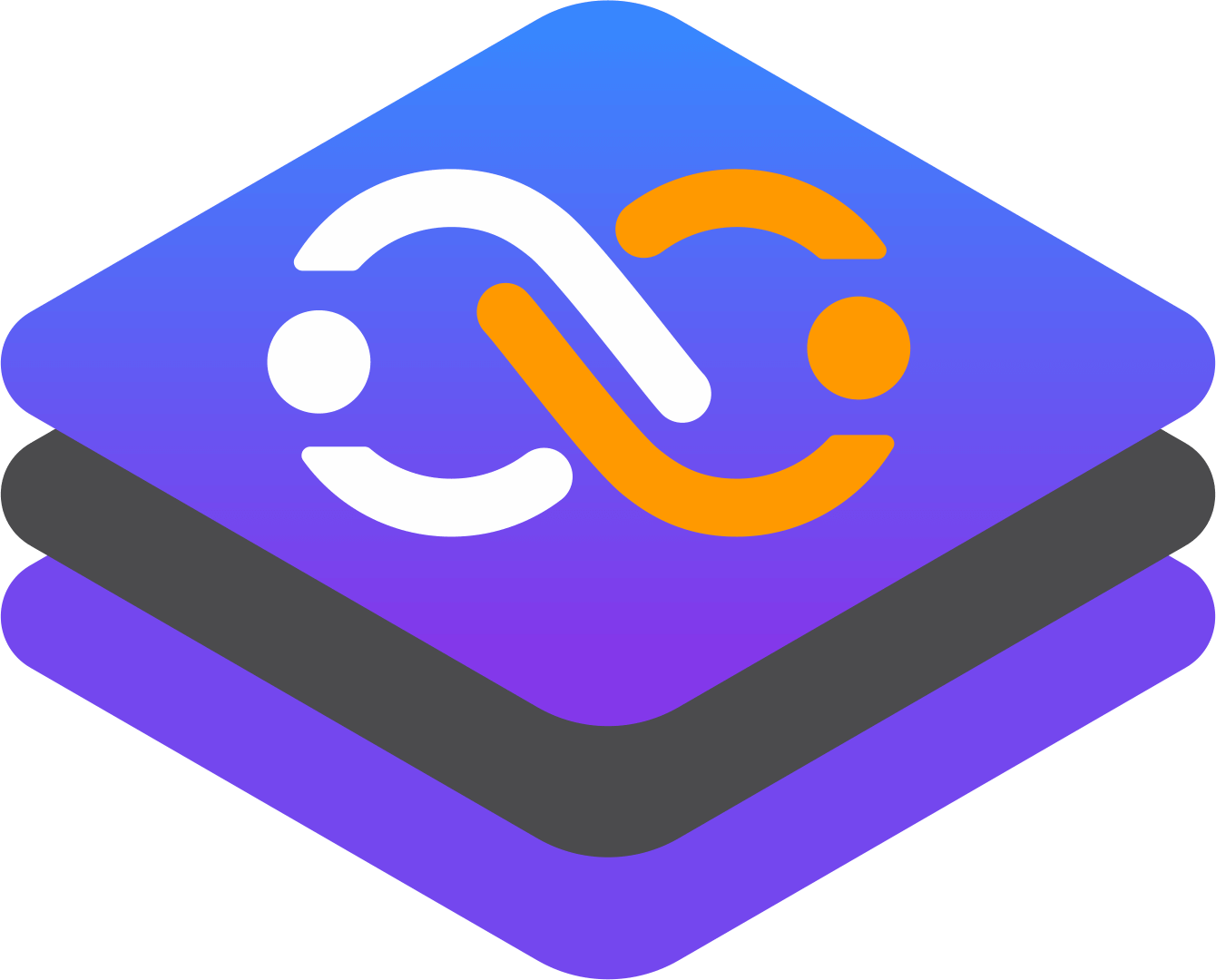Feature Parity Between Terraform and OpenTofu: A Technical Comparison

The infrastructure as code (IaC) landscape has seen significant developments with the emergence of OpenTofu, a community-driven project initiated in response to Terraform’s licensing changes. This article delves into the feature parity between Terraform and OpenTofu, highlighting their similarities, differences, and the implications of these distinctions.

Community-Driven Development and Licensing
One of the fundamental differences between Terraform and OpenTofu lies in their development models and licensing. Terraform, developed by HashiCorp, transitioned from an open-source model under the Mozilla Public License (MPL) to the Business Source License (BSL) in August 2023. This shift has limited the community's ability to contribute and influence the development of Terraform.
In contrast, OpenTofu is a community-driven project backed by the Linux Foundation. It maintains open-source availability with fewer restrictions, encouraging community input, collaboration, and innovation. This model allows developers to contribute confidently to OpenTofu’s growth and influence its feature roadmap through a ranking system.
Backward Compatibility
OpenTofu is designed to be backward compatible with Terraform, making it a viable drop-in replacement. It supports Terraform configuration files, modules, and workflows without requiring significant modifications. This compatibility extends to Terraform versions 1.5.x and most of 1.6.x, ensuring that existing Terraform setups can be migrated to OpenTofu with minimal effort.
Configuration Syntax
The syntax philosophy of Terraform and OpenTofu differs significantly. Terraform uses a procedural approach, guiding users through several steps to achieve the desired infrastructure state. This approach can be powerful but also intricate.
OpenTofu, on the other hand, employs a declarative syntax, allowing users to define the desired state of their infrastructure without detailing the steps to achieve it. This declarative approach results in more straightforward and readable configurations, enhancing maintainability and clarity in infrastructure definitions.
Modularity and Extensibility
Both Terraform and OpenTofu support modular design, which is crucial for scalability and maintainability in IaC. However, OpenTofu’s modular design is more focused on simplicity, facilitating the creation of reusable components and cleaner codebases. This emphasis on modularity encourages collaboration within teams by enabling the sharing of standardized components.
State Management and Encryption
State management is a critical aspect of IaC tools. Both Terraform and OpenTofu use state files to track resources and their configurations. However, OpenTofu introduces an additional feature: client-side state encryption. This capability ensures that the state file, which contains sensitive information about the infrastructure, is encrypted, enhancing security and compliance.
Provider Support
Both tools are provider-agnostic, meaning they support a wide range of providers such as AWS, Microsoft Azure, Google Cloud, Kubernetes, and Helm. This extensive provider support allows users to manage diverse infrastructure environments using a single tool.
CI/CD Integrations and Ecosystem
Terraform and OpenTofu integrate seamlessly with Continuous Integration/Continuous Deployment (CI/CD) tools, which is essential for automating infrastructure provisioning and management. Both tools offer excellent integration ecosystems, making them versatile in various deployment scenarios.
Error Handling and Side Effects
Terragrunt, an orchestration tool often used in conjunction with Terraform and OpenTofu, highlights a key difference in how these tools handle side effects and error scenarios. Terraform and OpenTofu are designed to minimize side effects, ensuring predictable and testable infrastructure provisioning. This design makes them reliable for reproducing infrastructure configurations.
However, real-world scenarios often require handling side effects and integrating potentially buggy code. Terragrunt addresses these needs by allowing controlled introduction of side effects and sophisticated error handling, which is not natively supported by Terraform or OpenTofu. This capability makes Terragrunt a valuable addition to the IaC ecosystem, especially when used in conjunction with OpenTofu or Terraform.
Commercial Support and Production Readiness
OpenTofu is suitable for production use cases without any exceptions. It has a robust support ecosystem, including commercial support options from companies like Spacelift, which can ensure reliable operation and migration of critical workloads.
Conclusion
The feature parity observed between Terraform and OpenTofu underscores the latter's viability as a compelling alternative, particularly for those who prioritize community-driven development and open-source principles. This community-centric approach empowers users with greater influence over the development roadmap, ensuring features better align with their specific needs. Moreover, OpenTofu's inclusion of client-side state encryption significantly enhances security, making it a preferred choice for environments where data protection is paramount. The tool's backward compatibility with Terraform configurations further simplifies migration processes, minimizing the risk and effort associated with switching. As OpenTofu continues to evolve, it may attract a burgeoning community of contributors and supporters, potentially reshaping the Infrastructure-as-Code (IaC) ecosystem by offering a more open and flexible alternative to Terraform.
In summary, while Terraform and OpenTofu share many similarities, the differences in their development models, licensing, and specific features such as state encryption and declarative syntax make OpenTofu an attractive option for those seeking a community-driven and more secure IaC solution.
